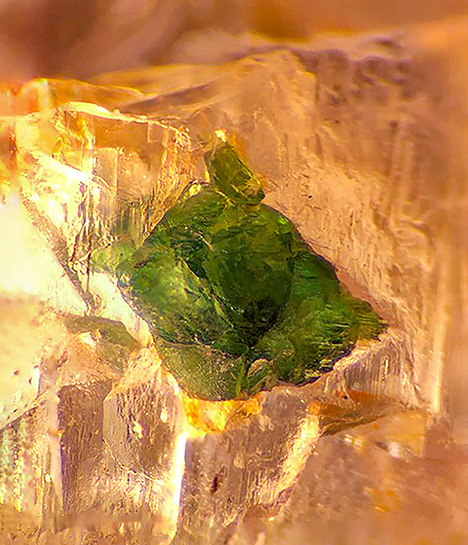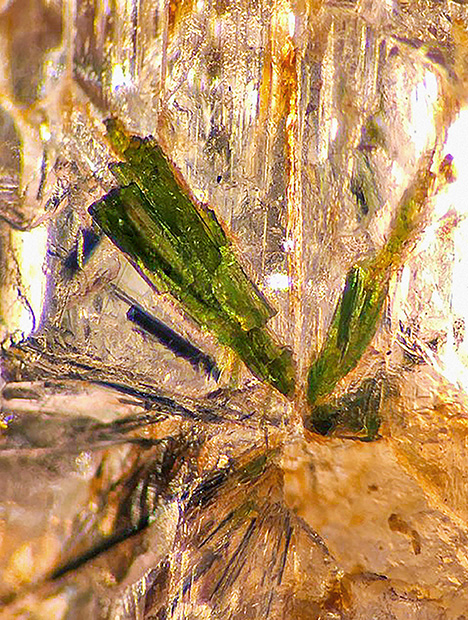Aegirine in Poudretteite

Originally discovered in Canada in the 1960s and named for the family that owned the rock quarry where it was found, extremely rare poudretteite was recognized as a new mineral in 1986. In 2000, the first gem-quality stone was discovered in Mogok, Myanmar. Recently, local miners found a new poudretteite deposit near Pein-Pyit village in the northeastern part of Mogok town. Some of these mined poudretteite gemstones contained unusual green crystal inclusions (figure 1).

The author examined two rough gem-quality light pink stones weighing about 1.065 and 1.104 ct. Gemological observation and Raman analysis confirmed that the two samples were poudretteite. The green crystal inclusions were present as both single crystals and sprays of acicular crystals in a radial pattern (figure 2). They had a mostly prismatic crystal shape with a bright yellowish green color. Micro-Raman analysis identified them as aegirine, the first discovery of this mineral in poudretteite from Mogok. Aegirine commonly occurs in alkaline igneous rocks, nepheline syenites, carbonatites, and pegmatites. This mineral inclusion could be an indicator of Mogok origin.



